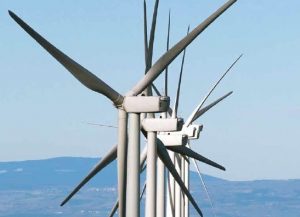Confirming that wind power companies are using its Triton Wind Profiler systems widely and relying on them heavily, Second Wind announces that Triton has amassed more than 900,000 hours of global wind data and will hit the one-million-hour mark soon. “At the rate Triton units all over the world are now collecting data, we easily surpassed the one million hour mark in June,” says CEO Larry Letteney. “Seeing such a large data set accumulate after just two years in the field tells us that customers are using their Tritons aggressively to gather diverse data sets to make the best decisions for locating wind turbines.”
Triton is a ground-based profiling unit that employs SODAR—SOund Detection and Ranging, a variation on radar but with sound instead of radio waves—to measure wind speed, direction, and other data. Reports issued by the U.S. National Renewable Energy Laboratory and ECN Wind Energy Research Center of the Netherlands in 2010 and 2009, respectively, credit Triton with accuracy comparable to that of meteorological towers, which are the current standard for wind data collection.
Triton remote sensing systems give wind power companies a mobile, ground-based complement to tower-based data collection. It broadens the range of data wind companies have for siting turbines in the most productive locations possible, profiling winds as high as 200 meters off the ground. There are 125 Triton units deployed in 15 countries across the globe.
“I think there is a great future for remote sensing,” according to Andrew Garrad, president of GL Garrad Hassan, one of the world’s top renewable energy consultancies. “The combination of SODAR devices and traditional anemometry is a very good one, and GL Garrad Hassan is already using remote sensing data in combination with conventional methods and data.”
Triton’s data collection landmark is among several important milestones Second Wind has passed recently. The company is celebrating its 30th anniversary this year. It recently sold its 10,000th Nomad wind resource data logger, which is destined for a prospective wind farm site in Texas, the nation’s largest wind power producer. Nomad units are deployed on seven continents, from the Arctic to Antarctica, with each unit compiling data from as many as 20 weather sensors. Second Wind ranked on the Inc. 500 list of fastest-growing privately held companies for the past three years, and was named a finalist in the “Excellence in Renewable Energy Awards” competition for Triton, which was commercially introduced in 2008.
“The real satisfaction in being around a long time, as we have, is getting to see what you’ve worked for pay off in a big way,” says Chief Technical Officer and Co-founder Walter Sass. “The company has learned a lot and done a lot over the last 30 years as wind power technology has developed. Now that wind power is a serious item on the national agenda, we’re in a great position to take those 30 years of experience and turn them into 30 more years of success.” Learn more at www.secondwind.com.



























